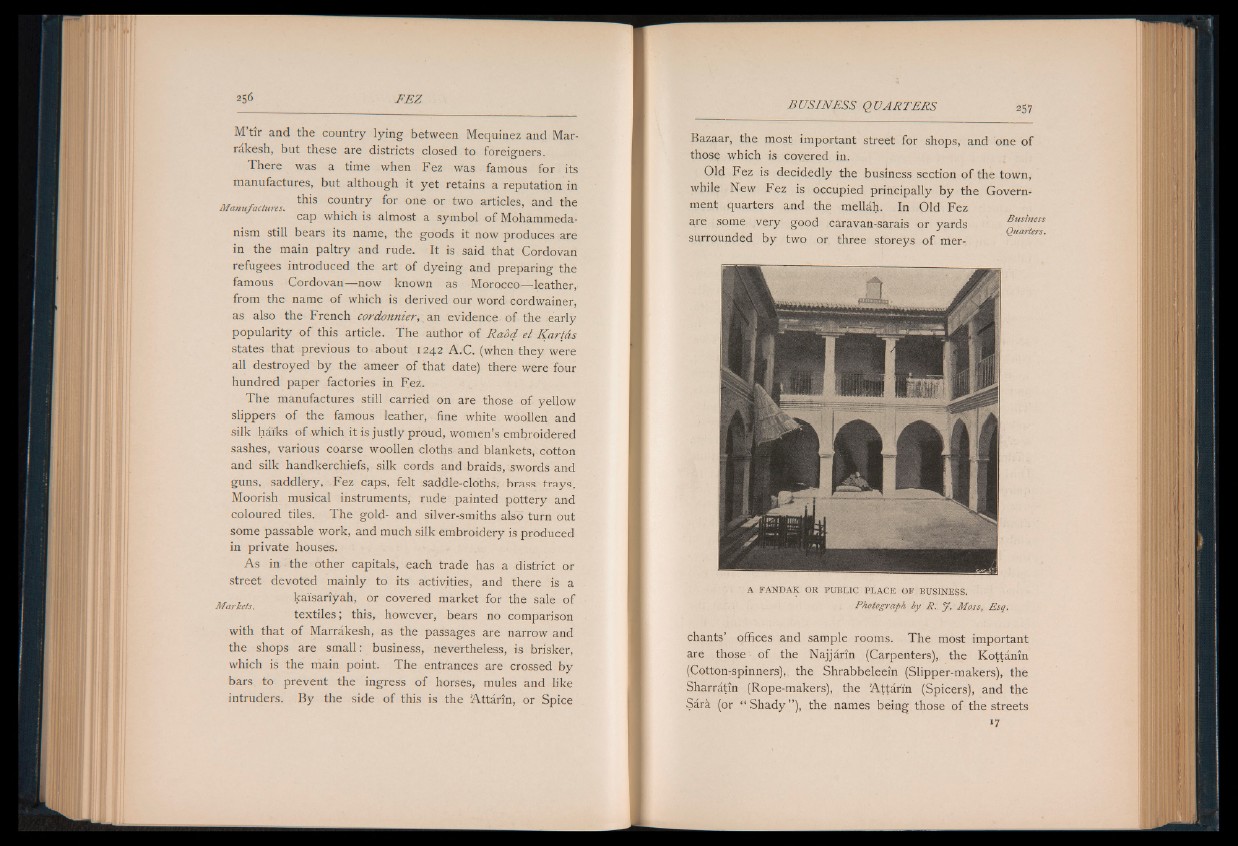
M’tir and the country lying between Mequinez and Marrakesh,
but these are districts closed to foreigners.
There was a time when Fez was famous for its
manufactures, but although it yet retains a reputation in
„ , . this country for one or two articles, and the Manufactures. 1 ,
cap which is almost a symbol of Mohammeda-
nism still bears its name, the goods it now produces are
in the main paltry and rude. It is said that Cordovan
refugees introduced the art of dyeing and preparing the
famous Cordovan— now known as Morocco— leather,
from the name of which is derived our word cordwainer,
as also the French cordonnier, an evidence of the early
popularity of this article. The author o f Raod el Kart&s
states that previous to about 1242 A.C. (when they were
all destroyed by the ameer of that date) there were four
hundred paper factories in Fez.
The manufactures still carried on are those of yellow
slippers of the famous leather, fine white woollen and
silk hai'ks of which it is justly proud, women’s embroidered
sashes, various coarse woollen cloths and blankets, cotton
and silk handkerchiefs, silk cords and braids, swords and
guns, saddlery, Fez caps, felt saddle-cloths, brass trays,
Moorish musical instruments, rude painted pottery and
coloured tiles. The gold- and silver-smiths also turn out
some passable work, and much silk embroidery is produced
in private houses.
A s in the other capitals, each trade has a district or
street devoted mainly to its activities, and there is a
, kaisariyah, or covered market for the sale of Markets.
textiles; this, however, bears no comparison
with that of Marrakesh, as the passages are narrow and
the shops are small: business, nevertheless, is brisker,
which is the main point. The entrances are crossed by
bars to prevent the ingress of horses, mules and like
intruders. By the side of this is the Attarin, or Spice
Bazaar, the most important street for shops, and one of
those which is covered in.
Old Fez is decidedly the business section of the town,
while New Fez is occupied principally by the Government
quarters and the mellah. In Old Fez
are some very good caravan-sarais or yards Business
Quarters
surrounded by two or three storeys o f mer-
A FAND AK OR PUBLIC P L A C E OF BUSINESS.
Photograph by R. J . Moss, Esq.
chants’ offices and sample rooms. The most important
are those of the Najjarin (Carpenters), the Kottanin
(Cotton-spinners), the Shrabbeleein (Slipper-makers), the
Sharrätin (Rope-makers), the 'Attarin (Spicers), and the
Sara (or “ Shady” ), the names being those of the streets
«7